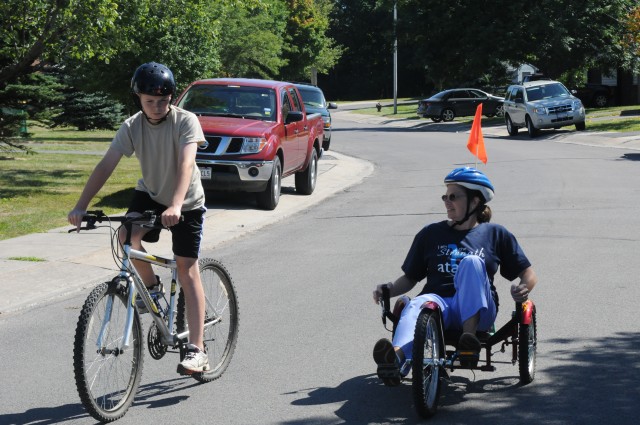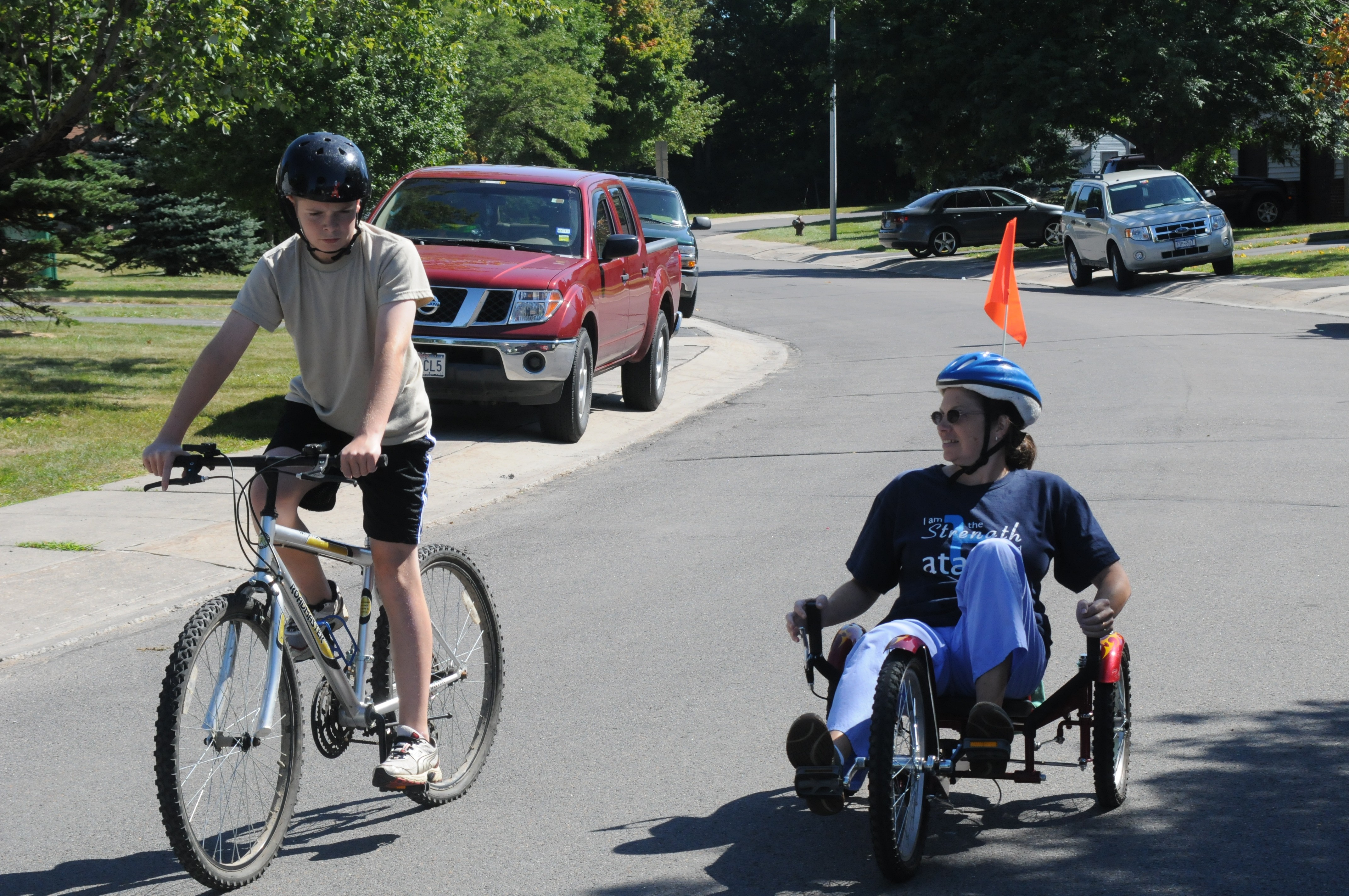FORT DRUM, N.Y. -- Some Families need extra strength during deployments, while others need extra strength for life.
Sheryl Sad, wife of Spc. Mark Sad, 277th Aviation Support Battalion, 10th Combat Aviation Regiment, found herself needing extra strength for daily activities. She was diagnosed in 2007 with a condition known as spinocerebellar ataxia, which causes her to have slightly slurred speech and poor balance when walking, a condition that will continue to deteriorate her motor skills.
"I had no clue anything was wrong with me," Sad said. "I used to think I was just uncoordinated, but I discovered that it wasn't my fault."
Ataxia means "without coordination," and people with ataxia have problems with coordination because parts of the nervous system that control movement and balance are affected. Ataxia can affect the fingers, hands, arms, legs, body, eye movements and speech.
The word ataxia is often used to describe a symptom of incoordination that can be associated with infections, injuries or degenerative changes in the central nervous system. Ataxia also is used to denote a group of specific degenerative diseases of the nervous system called hereditary and sporadic ataxias.
"My goal is to get as much information as possible so I can learn all about this disease and be as active as I can be for as long as I can," Sad said. "I want to learn what I can do and what I can't do, so in the future, I can be prepared for whatever comes my way. It is just a mindset of accepting the changes, and I understand some days are good and some days are bad."
Diagnosis is based on medical history, family history and neurological evaluation including an MRI scan of the brain. Blood tests may be performed to rule out other possible disorders that may present similar symptoms.
Genetic blood tests are now available for some types of hereditary ataxia to confirm a diagnosis or as a predictive test to determine if someone has inherited an ataxia gene known to affect other family members.
"The disease has been progressing, but because I know what is happening, I am accepting things a little better," Sad said. "I am setting limitations for myself. For instance, instead of riding a two-wheeled bicycle, my husband found a three-wheeled cruiser for me."
Symptoms and time of onset vary according to the type of ataxia. Dominant ataxia often begins in the 20s or 30s or even later in life. Individuals may not show symptoms until they are in their 60s.
"I went to my first support group in Syracuse," she said. "It's a relief to know that there are other people who struggle and I am not alone. It is nice to know that I am not the only one and to have someone to share my thoughts and experiences with.
"If anyone thinks they may have symptoms, they should see their primary caregiver and they can direct them on what they need to do," Sad added. "People should definitely research and see their physician if they feel they have any symptoms."
Typically, balance and coordination are affected first. Incoordination of hands, arms and legs and slurring of speech are other common symptoms. Walking becomes difficult and is characterized by walking with feet placed further apart to compensate for poor balance. Impaired coordination of the arms and hands affect a person's ability to perform tasks requiring motor control, such as writing and eating. Slow eye movements can be seen in some forms of ataxia. As time goes on, ataxia can affect speech and swallowing.
To help keep her muscles strong for as long as possible, Sad said she and her 15-year-old son, Anthony, spend time going to the gym and riding bikes together while her husband is deployed.
"I couldn't do this without my husband and son," Sad said. "My son is my motivation to keep exercising, and he is right there. They make life a lot easier for me and make me very happy."
"I do what I can to help her stay active and help get her out of the house," the Indian River High School freshman said. "When we ride our bikes together, we may not get there fast, but we get there together."
To learn more about the disease, visit <a href="http://www.ataxia.org">www.ataxia.org</a>.


Social Sharing